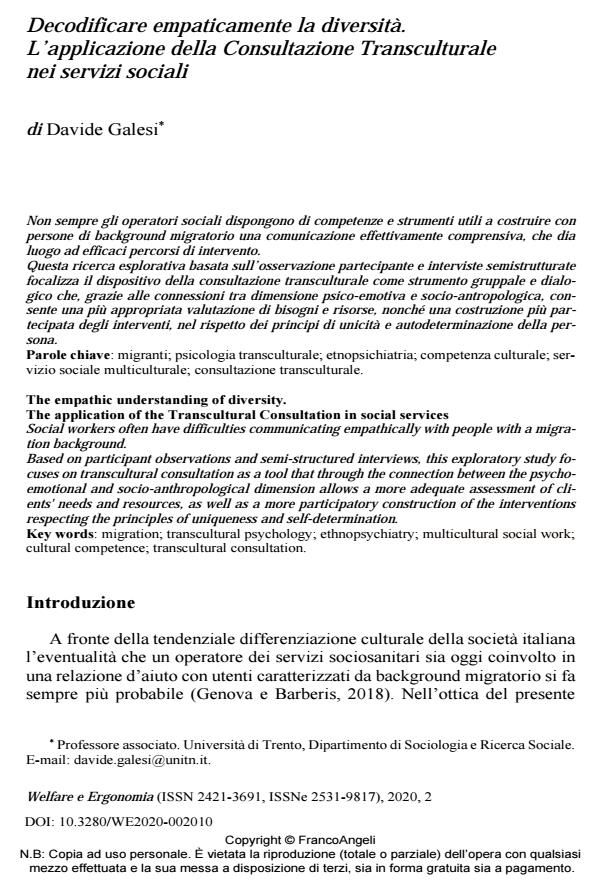The empathic understanding of diversity. The application of the Transcultural Consultation in social services
Journal title WELFARE E ERGONOMIA
Author/s Davide Galesi
Publishing Year 2021 Issue 2020/2
Language Italian Pages 18 P. 132-149 File size 227 KB
DOI 10.3280/WE2020-002010
DOI is like a bar code for intellectual property: to have more infomation
click here
Below, you can see the article first page
If you want to buy this article in PDF format, you can do it, following the instructions to buy download credits

FrancoAngeli is member of Publishers International Linking Association, Inc (PILA), a not-for-profit association which run the CrossRef service enabling links to and from online scholarly content.
Social workers often have difficulties communicating empathically with people with a migration background. Based on participant observations and semi-structured interviews, this exploratory study focuses on transcultural consultation as a tool that through the connection between the psycho-emotional and socio-anthropological dimension allows a more adequate assessment of clients' needs and resources, as well as a more participatory construction of the interventions respecting the principles of uniqueness and self-determination.
Keywords: Migration; transcultural psychology; ethnopsychiatry; multicultural social work; cultural competence; transcultural consultation.
Davide Galesi, Decodificare empaticamente la diversità. L’applicazione della Consultazione Transculturale nei servizi sociali in "WELFARE E ERGONOMIA" 2/2020, pp 132-149, DOI: 10.3280/WE2020-002010